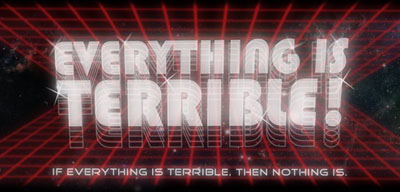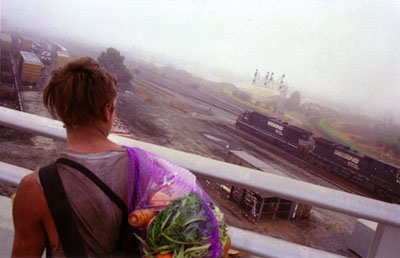
Later this week on Coilhouse, we’ll be posting a Very Special Interview with one of our all-time favorite bloggers: Ross Rosenberg of ECTOPLASMOSIS! fame. If you’re unfamiliar with this man’s writing, proceed to ECTOMO immediately and read EVERYTHING that Ross – along with his wily co-editors – has posted there. We promise you, nothing will ever be the same. Ever. Again. For the abyss gazes also into you.
Here are some topics that Ross enjoys writing about:
Ross’s keen command of the English language, coupled with his mystifying ability to flush esoterica out of the grimiest and most cryptic corners of the web, has landed him in our RSS readers from day one. How does he do it? The full interview is still to come, but for now, the exalted 23rd level Chaotic Neutral Blogmaster is ready to divulge his secrets for success to future generations:
What advice would you give to aspiring bloggers?
1) Respect: When starting out it’s hard to get noticed. Just like in prison, it pays to find the biggest, baddest motherfucker in the room and go at them full steam. Nothing gets attention like pointing out Perez Hilton’s grammar mistakes or a long opinion piece on how you could take Xeni Jardin in a knife fight.
2) Choose your words carefully: Polysyllabic words are for pussies and Fascists. Keep it short, sweet, and guttural. Also, using the British spelling of any word will ensure that you’ll never get anywhere and people will make fun of you behind your back.
3) Lists, lists, lists: Everything you write should be in the form of a list, whether it be the top ten things you smelled on Thursday or the top five tips for aspiring bloggers.
4) Just because your paranoid doesn’t mean they’re not out to get you: Blogging is a dog-eat-dog business (see #1), consequently everyone is a potential threat, so do your best to take care of them early whether it be character assassination or just giving really bad advice.
5) Blockquote: This is a big one. Why write something when someone else has written it for you? Just blockquote a big old chunk of text and add a one line introduction followed by a one or two line opinion at the end. Even better, ask your readers to comment and give you even more content! “Warren Ellis wrote an interesting article about ferret juicing today:” Blockquote everything but the last paragraph. “It all sounds good, but I’m not sure everyone has access to a cider press. What do you use to juice your ferrets?”
Bonus: Boobs: Seriously, no matter what the subject matter is, stick some tits in there. Everybody loves tits.
Stay tuned for the next installment of Rosenberg Knows Things About Stuff, wherein the question of “boxers or briefs?” and other impenetrable mysteries of Rossness are finally answered.












